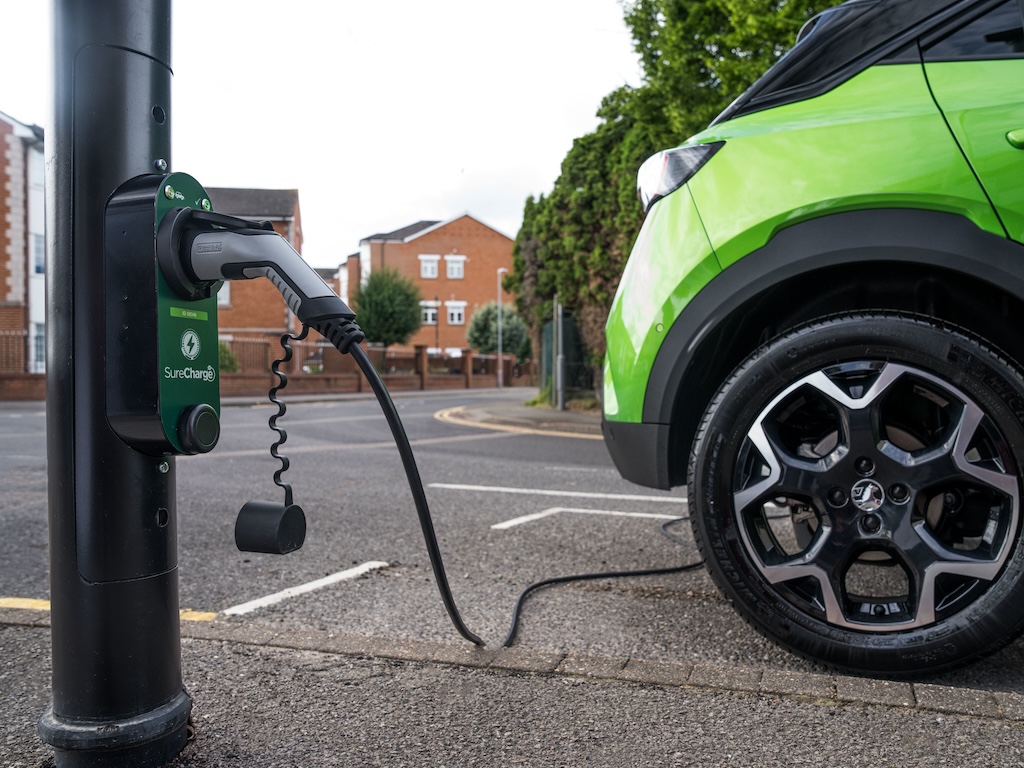Current UK electric vehicle infrastructure targets should be based on better, more precise metrics to ensure a true reflection of progress, according to a new report.
The research sets out three new metrics found to be more effective to track charging rollout progress
Research carried out by Vauxhall in partnership with Cenex – the Centre of Excellence for Low Carbon and Fuel Cell Technology – suggests current targets are too wide in scope, such as the number of public charge points and the number of EVs per charge point.
The assessment indicates that the broad nature of current UK targets don’t go far enough to provide an actionable and measurable reflection of where infrastructure is required.
And the research sets out three new metrics found to be more effective to track progress across different types of public charging: Near Home Charging, Destination Charging and Journey Charging
Accompanying the report, an online interactive dashboard has also been made publicly available on Cenex’s NEVIS service, also online at www.electricstreets.co.uk, to share the data behind the new metrics.
The new proposals consider the needs of different drivers and different locations, to provide a fairer and more relevant analysis of true progress.
The Near Home Charging Index covers any vehicles at or near a residential dwelling. It considers the balance of supply and demand, in relation to the distribution of charge points.
The Journey Charging Index focuses on dedicated locations for high-powered EV charging (likely with other facilities including food courts and shopping amenities) – providing a future version of today’s petrol stations. This is calculated using data about the demand for charging alongside data about the supply and capacity of charging facilities.
The Destination Charging Ratio covers destinations which people visit for business or leisure, where charging services are incidentally also available. A Destination Charging Ratio for any given site can be calculated through consideration of visitor need, usage of parking bays, the proportion of long-stay versus short-stay visitors and the proportion of EVs at a given point in time.
Using these new metrics to analyse current data, the study unearthed a wide range of new data and statistics to give all-new insights into current charging provision and gaps.
These include that only 19% of UK households who need charging are close to a charge point under the Near Home Charging metric. Across Britain, supply is a little ahead of demand, although regional disparities continue to exist. Camden nearly has the capacity it needs for projected levels of local EV ownership in 2040.
Meanwhile the M27 was found to be the motorway with the worst Journey Charging provision – and the M2 between Gillingham and Canterbury was deemed the best.
James Taylor, managing director, Vauxhall, said: “Partnering with Cenex to produce this report has been valuable in demonstrating how much needs to be done to improve the current metrics we use, to more accurately reflect the true progress being made and that still needs to be made throughout the country. This data highlights how broad the UK’s current target of 300,000 public charge points by 2030 is and how useful a more nuanced and detailed picture is.”
Chris Rimmer, head of policy, strategy and implementation, Cenex, added: “A key finding from the research is that metrics must be relevant, actionable, scalable and measurable. Applying this to the three ways charge points are used allows us to assess whether we are getting the right charge points of the right power into the right places.”
The latest work builds on Vauxhall’s ongoing Electric Streets of Britain campaign, initiated in 2023 alongside leading charging operators Char.gy, Connected Kerb and SureCharge to make electric vehicle infrastructure accessible for all drivers wishing to drive an EV.
Through Electric Streets of Britain, a national database has been established so UK motorists who want to have on-street residential EV chargers installed near them can register their interest.
Since launch, Vauxhall has received over 13,000 registrations on over 11,500 streets across the country.

